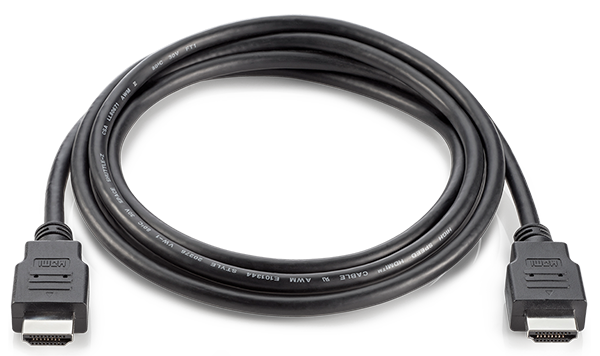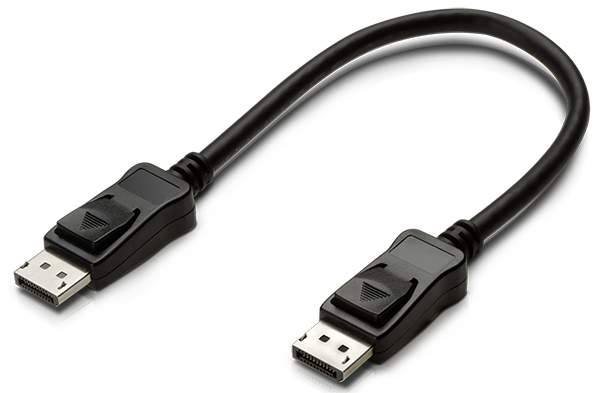We use cookies to offer you a better experience. For more information on how we use cookies you can read our Cookie and Privacy Policy.
What are the Most Popular Computer Monitor Cable Types?

Whether you’re setting up a new desktop PC for the first time or you want to upgrade to a second monitor, getting the best experience depends largely on the components you purchase.
If you’re not familiar with the different computer monitor cables available, the choices may be confusing. Here’s what you need to know to make the best buying choice.
Original VGA connectors
One of the older monitor cables available, VGA (Video Graphics Array) is common on CRT monitors and some of the first models of LCD monitors.
You can recognize these video cables by the 15 small holes on one end of the end of the cable, and 15 pins on the other. They were originally designed for lower-quality displays that generally had a 640 x 480 resolution, which means that newer LCD monitors may pick up some fuzziness in the picture quality when using a VGA cable.
DVI cables
At first glance, the DVI (Digital Visual Interface) cables look quite a bit like VGA but they don’t cause some of the visual noise that the lower quality VGA cables can create. DVI has more pins, with up to 24 pins on the end for digital video signals, plus four more for analog.
Newer monitors will likely have this connection option, as it supports up to 2,560 x 1,600 pixel resolutions. If you are unsure if your monitor supports DVI or VGA, simply count the number of pin holes on your device.
The popular HDMI
If you've ever hooked up a newer television, you’re probably already aware of the compatibility that HDMI (High-Definition Multimedia Interface) has with almost every video component in a modern entertainment system.
With new computer monitors also supporting this technology, it’s easier than ever to get connected using HDMI monitor cables.

HDMI is the digital standard because it is popular and affordable. This same cable carries sound information, too, so it can double as an audio connection for monitors with internal speakers. Each end of HDMI monitor cord types contains 19 pins, but is much smaller than either VGA or DVI.
There are currently three types of HDMI that consumers use today, all configured with 19 pins in different arrangements.
Type A is the largest and the one most commonly used for televisions, monitors, and 4K screens. Type C is slightly smaller (often referred to as a “mini”) and is a popular choice for portable devices. Type D is the smallest of the three and is also known as a “micro HDMI.” Types B and E are not currently used for consumer products.
DisplayPort™ and Mini DisplayPort™ technology
If you use any Apple® products, you will likely need DisplayPort™ or Mini DisplayPort™ cables. These are usually compatible with most Mac® devices and have the same video quality as HDMI or DVI.

They are also used with a variety of other brands of computing devices, though it may not be the only port on the device.
If you find yourself needing to connect an incompatible monitor into a DisplayPort™ device, you can purchase an adapter to connect into the 20-pin interface.
USB options
Some monitors are compatible with standard USB (Universal Serial Bus) connectors. Of the different types of monitor cables, USB is often the easiest to identify and can be the most affordable.
USB-connected monitors don’t usually offer the best resolution, so it’s not the first choice for those who care about visual quality. However, if you need to quickly connect to a second monitor or need something that works easily while you’re on-the-go, USB has its advantages.
When choosing between PC monitor cable types, it can often come down to your personal preference. Quality and price may narrow down your selections, but your final choice will mostly depend on what’s compatible with your display.
Related articles:
- What is USB-C?
- DisplayPort vs HDMI: Which is Better?
- What is a Thunderbolt Port in PCs and Monitors?
About the Author: Linsey Knerl is a contributing writer for HP® Tech Takes. Linsey is a Midwest-based author, public speaker, and member of the ASJA. She has a passion for helping consumers and small business owners do more with their resources via the latest tech solutions.
Article reposted with permission from HP Tech Takes






